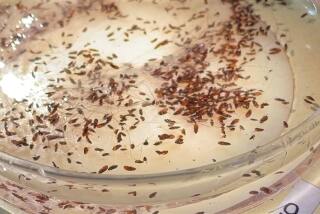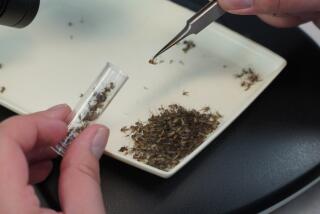INFECTIOUS DISEASE REPORT
Each week the Orange County Public Health Department reports to the state the incidence of various infectious diseases in the county. The following table details a selection of these afflictions for November, the most recent month for which information is available:
NUMBER OF CASES November Current Previous Year to Date % Disease 1988 Year to Year to Change, Date Date ‘87-’88 Acquired immune 32 255 220 +16 deficiency syndrome (AIDS) Campylobacter 31 275 321 -14 Lapse of consciousness 206 1,566 1,432 +9 (non-alcohol related) Giardiasis 53 413 419 -1 Gonococcal infection 265 2,588 3,367 -26 Hepatitis A 34 355 287 +24 Hepatitis B 128 403 532 -24 Hepatitis Non-A, Non-B 15 69 73 -5 Meningitis 42 209 351 -40 Salmonellosis 15 308 367 -16 Shigellosis 17 373 237 +57 Streptococcal infection 333 3,444 2,134 +61 Syphilis 103 1,136 895 +27 Tuberculosis 29 222 261 -15
Acquired immune deficiency syndrome : Fatal disease that attacks the body’s immune system. Is caused by the human immunodeficiency virus. Transmitted by sexual contact, exposure to contaminated blood and from an infected mother to her newborn.
Campylobacter: Characterized by sudden, acute diarrhea, abdominal pain, fever and vomiting. Associated with foods poorly refrigerated or improperly cooked, unpasteurized milk and unchlorinated water.
Giardiasis: A protozoan infection principally of the upper small intestine. May be associated with a variety of intestinal symptoms such as chronic diarrhea, abdominal cramps and bloating, fatigue and weight loss. Contracted by ingesting contaminated food or water.
Gonococcal infections: Sexually transmitted bacterial diseases that differ in males and females in terms of course, severity and recognition.
Hepatitis A: An acute viral illness affecting the liver. Occurs mostly in children and young adults. Usually transmitted by oral ingestion of infected material or by poor sanitation.
Hepatitis B: An acute illness of the liver transmitted by exposure to contaminated needles, by administration of blood or blood products and/or oral ingestion of contaminated material.
Hepatitis Non-A, Non-B: A form of serum hepatitis caused by a virus closely resembling the one responsible for Hepatitis B.
Meningitis: Inflammation of the three membranes enveloping the brain and spinal chord.
Salmonellosis: A bacterial disease characterized by the sudden onset of a headache, abdominal pain, diarrhea, nausea, vomiting, dehydration and fever. Contracted by eating contaminated food.
Shigellosis: Acute diarrhea acquired by person-to-person contact, through eating contaminated food or by handling contaminated objects.
Streptococcal infection: Often manifested as strep throat or scarlet fever. A sphere-shaped bacteria that grows like chains of little balls.
Syphilis: A chronic venereal disease caused by a spirochete and transmitted by sexual intercourse. The first symptom, a chancre, appears after an incubation period of 12 to 30 days and is followed by a slight fever.
Tuberculosis: A mycobacterial disease that usually affects the lungs. General symptoms include sweats, hectic fever and severe weight loss.
Sources: Orange County Public Health Department, “Reported Cases of Specified Notifiable Diseases,” for November, 1988.
“Control of Communicable Diseases in Man,” an official report of the American Public Health Assn., Abram S. Benenson, editor, 1985, 4th edition.
“Better Homes and Gardens Family Medical Guide,” Donald G. Cooley, editor, 1973, 2nd edition.
“The Bantam Medical Dictionary,” prepared by Laurence Urdang Associates Ltd., 1982.
“Stedman’s Medical Dictionary,” Williams and Wilkins Co., 1973, 22nd edition.
More to Read
Sign up for Essential California
The most important California stories and recommendations in your inbox every morning.
You may occasionally receive promotional content from the Los Angeles Times.










